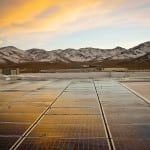The midterm elections yielded mixed results for power-related matters across the U.S.
Voters in Arizona shot down a measure that would have expanded the state’s renewable portfolio standard (RPS) to 50% by 2030, but voters in Nevada overwhelmingly backed a similar measure, adding it to a growing list of states that have sought 50% RPS levels.
In Colorado, voters defeated a measure to limit drilling for oil and natural gas on state-owned land. In Washington State, voters thwarted a consequential statewide initiativeto impose a fee on emissions of carbon dioxide. And in California, voters defeated a measure that would have allowed state lawmakers to pass a spending plan for revenue from the state’s cap-and-trade program for greenhouse gases (GHGs) from 2024 onward.
Arizona Overwhelmingly Rejects Prop 127
Proposition 127, the “Renewable Energy Standards Initiative” sought approval for a constitutional amendment that required Arizona electric utilities to acquire a certain percentage of power from renewables each year, with that percentage increasing annually—from 12% in 2020 to 50% in 2030.
A “no” vote—which voters ultimately, and overwhelmingly delivered—means that no constitutional amendment will be made, leaving in place the state’s existing renewable energy requirements of 15% by 2025.
The ballot measure was backed by California billionaire activist Tom Steyer’s political group NextGen Climate Action, which also spearheaded action to increase the RPS in Nevada, putting the states on par with California’s ambitious RPS. Predictably, it also had the backing of renewables and environmental groups.
However, it was heavily opposed by a political action committee (PAC) funded by Pinnacle West Capital Corp., the parent company of Arizona Public Service (APS), which is the state’s largest electric utility. Grand Canyon State Electric Co-op Association, National Rural Electric Cooperative Association, and Mohave Electric Cooperative also banded together to fund a second PAC, and a UniSource Energy Corporation, the parent firm of Tucson Electric Power (TEP), funded a third PAC. Support and opposition funding exceeded $54.82 million, making it one of the most expensive ballot measures in the state’s history.
On November 6, APS lauded the electoral outcome. It noted the “ill-conceived proposition was opposed by a large, diverse and bipartisan coalition of Arizona business and community leaders,” but APS Chairman, President, and CEO Don Brandt also said “there is a better way to create a clean-energy future for Arizona that is also affordable and reliable.” To that end, APS is launching an effort to gather ideas and seek input from customers and stakeholders representing diverse viewpoints, he said. “The campaign is over, but we want to continue the conversation with Arizonans about clean energy and identify specific opportunities for APS to build energy infrastructure that will position Arizona for the future.”
For APS, the prospect of a larger renewables share is inevitable. Maricopa County, the fastest-growing county in the U.S., expects 340,000 new customers will move into the service territory by 2030. “We will need significant investment in new resources including infrastructure, cleaner power generation and advanced energy technologies to support this growth and achieve a clean-energy future,” said Brandt.
APS already backs “a clean-energy strategy” that includes solar, battery storage, encourages electric vehicles, and notably, “recognizes the critical importance of Palo Verde Generating Station.” The three-unit nuclear plant, which has a generation capacity of 4 GW, would have been forced to close in the next decade if voters approved the ballot measure, APS suggested in August, because Prop 127 would have prompted a ramp-up of wind and solar power development.
“As the nation’s largest producer of reliable emission-free energy, Palo Verde is the anchor of Arizona’s clean-energy future,” said Brandt. “Any serious plan to reduce carbon emissions has to include nuclear energy and Palo Verde.”
Nevada Backs 50% RPS but Rejects Open Market Energy Choice
Sixty percent of Nevada’s voters backed Question 6, which sought to increase the state’s RPS from 25% by 2025 to 50% by 2030. The initiative sought to define renewable energy to include sources such as solar, geothermal, wind, biomass, and hydropower. The measure was largely expected to pass as it had little opposition.
It follows Republican Gov. Brian Sandoval’s June 2017 veto of a bill that would have increased the state’s RPS to 40% by 2030, even though it had mixed backing from Republicans and Democrats in Legislature. Sandoval said the idea was “premature” because Nevada’s energy policy was evolving.
Nevada’s voters, however, defeated Question 3,which would have prohibited utilities from establishing monopolies in their service areas. Question 3 would have also declared that people, businesses, and political subdivisions had the right to choose a utility service provider.
Voters had already approved Question 3 in 2016, but the state’s law requires the measure pass a second time to become part of the Nevada Constitution. One reason it passed in 2018 compared to 2016 was that opposition to the measure in 2018 was backed by a PAC that raised $63.59 million, with 99.3% of the campaign’s funds coming from NV Energy—a company that provided about 90% of the state’s population with power in 2018, along with Berkshire Hathaway, which Warren Buffett chairs, and which is the parent firm of NV Energy.
Washington State Defeats Carbon Emissions Fee
Voters in Washington defeated Initiative 1631, which would have enacted a carbon emission fee of $15 per metric ton of carbon starting in January 2020, and increased it by $2 annually until the state’s GHG reduction goals are met. Complete vote totals for the initiative were not available as of November 8 owing to a delay in counting mailed votes, but initial numbers suggested a sound defeat.
As experts explained to POWER, the initiative proposed a fee—not a tax—because the revenue could not have been spent on government expenses or public programs; it would have been dedicated instead to specific accounts relating to investing in climate and environmental projects. If the initiative had passed, Washington would have been the first in the nation to have a carbon fee.
But according to Rachel Cox, an attorney at Stoel Rives in Seattle, the hotly contested campaign, which drew tens of millions of dollars from both supporters and opponents, was just the latest in a string of attempts to curb carbon emissions.
A carbon tax of $15 per metric ton of emissions starting in July 2017 was defeated by Washington voters in 2016, though the initiative was reportedly modeled on British Columbia, which implemented a carbon tax in 2008. Cox noted the Department of Ecology’s carbon cap-and-trade program was also overturned in 2017, as well as several carbon tax bills introduced in the 2017–2018 Washington legislative sessions.
“We do not expect that the push to adopt climate change regulation in Washington State will end here,” she said. “Washington’s Governor Jay Inslee has made climate regulation a major priority during his two terms, and both the Washington State House and Senate appear to be gaining stronger majorities through this election, which could lead to renewed efforts to pass climate change-related legislation in the next session,” she said.
—Sonal Patel is a POWER associate editor (@sonalcpatel, @POWERmagazine)
(Nov. 9: Correction to reflect Palo Verde’s capacity is 4 GW)










